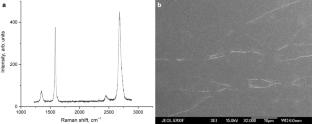基于碳和氧化锡纳米颗粒的复合气体传感器
IF 0.4
4区 物理与天体物理
Q4 PHYSICS, MULTIDISCIPLINARY
引用次数: 0
摘要
介绍了用碳锡纳米颗粒复合材料制备NO2传感器的方法和对空气中10-40 ppm范围内NO2杂质的检测结果。所有传感器在室温下工作。电弧放电烟灰和纳米锡传感器的灵敏度最高。石墨烯和SnO纳米颗粒层的组合显示出最低的响应时间。讨论了传感器与低NO2浓度的相互作用机制。本文章由计算机程序翻译,如有差异,请以英文原文为准。

Composite gas sensors based on carbon and tin oxide nanoparticles
The methods for manufacturing NO2 sensors from carbon-tin nanoparticle composites and the results of detection of NO2 impurities in the range of 10–40 ppm in air are presented. All sensors operate at room temperature. The sensors with arc discharge soot and tin nanoparticles demonstrate the highest sensitivity. A combination of the graphene and SnO nanoparticle layers demonstrates the lowest response time. The interaction mechanisms of sensors with low NO2 concentrations are discussed.
求助全文
通过发布文献求助,成功后即可免费获取论文全文。
去求助
来源期刊

Russian Physics Journal
PHYSICS, MULTIDISCIPLINARY-
CiteScore
1.00
自引率
50.00%
发文量
208
审稿时长
3-6 weeks
期刊介绍:
Russian Physics Journal covers the broad spectrum of specialized research in applied physics, with emphasis on work with practical applications in solid-state physics, optics, and magnetism. Particularly interesting results are reported in connection with: electroluminescence and crystal phospors; semiconductors; phase transformations in solids; superconductivity; properties of thin films; and magnetomechanical phenomena.
 求助内容:
求助内容: 应助结果提醒方式:
应助结果提醒方式:


